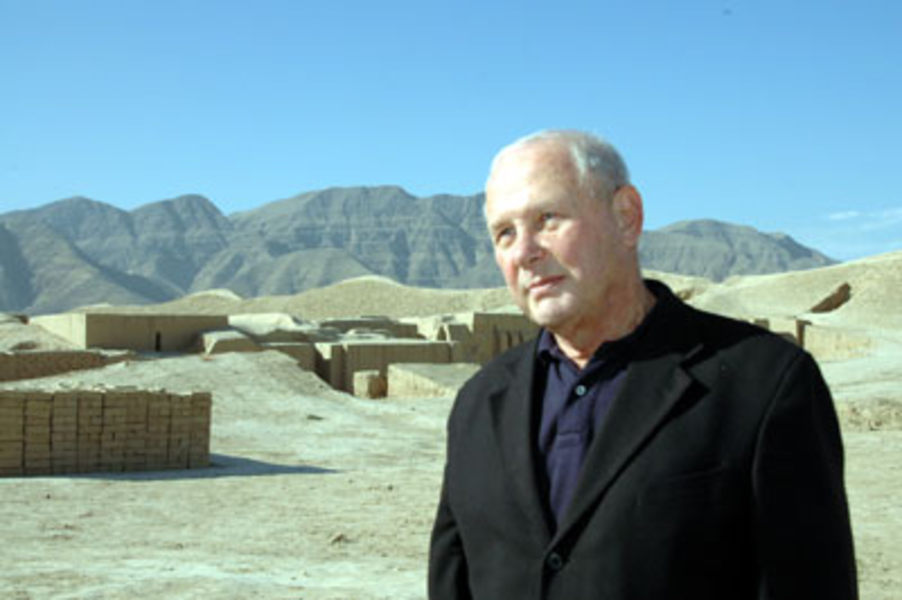New Silk Road Strategy: Problems and Perspectives – Interview with Prof. S. Frederick Starr

Since the collapse of the bipolar world system, discussions on the new world order and problems of regional instability have not yet ceased. They have recently achieved perhaps their apogee – fierce mass media disputes have erupted around the Russian-proposed Eurasian way of development from the one side, and the US “New Silk Road” strategy from the other. Each suggested model of development has its own advantages and vulnerabilities. It is quite obvious that each vision’s success is closely linked with the settlement of the Afghan issue in one or another format; that is natural in conditions of globalization, integrity and indivisibility of international security.
In fact, any strategy pertaining to the Eurasian area should have to deal with the Afghan dilemma, directly or indirectly affecting the speed and the level of its realization. Besides the issues of illicit traffic in drugs, illegal migration and criminality from the territory of Afghanistan, the following external tendencies should be kept in mind that can also negatively influence the processes ongoing on the Eurasian continent:
- spread of radical movements in Central Asia (currently found in Kyrgyzstan and Kazakhstan);
- atomism and absence of geopolitical unity in the CA region;
- gradual ascent of Islamic regimes to power in the Middle East and continuation of instability there;
- gridlock in the Caspian dispute and uncertainty in the sphere of energy policy in the Middle East.
In this connection, the concept of the so-called “New Silk Road” is of special interest. It was suggested by Prof. S. Frederick Starr, Chairman of the Institute of Central Asia and Caucasus at Johns Hopkins University, and later formulated as a new US strategy jointly with the Washington Center for Strategic and International Studies. At present, the Obama Administration seems to have actively started implementing its provisions, as evidenced by the agenda of US Secretary of State Hillary Clinton’s last visit to the republics of Central Asia and Pakistan, which immediately border Afghanistan.
The ideas, set forth in the concept are not new. Similar ideas have been already voiced in October 1997 by Senator Sam Brownback (R-KS), who closely cooperated with Prof. Starr in his legislative initiative “Silk Road Act,” and later were extensively developed by Prof. Starr in his “Big Central Asia” concept. Today he suggests the renewed version of the concept named a “New Silk Road” in his report titled “Afghanistan Beyond the Fog of Nation Building: Giving Economic Strategy a Chance.”
It is worth noting that the regional dimension of the US Central Asian strategy was analyzed by Prof. Starr in such his earlier works such as “A Strategic Assessment of Central Asia and the Caucasus, 1999-2000” and “The New Silk Roads” (2008).
In “Afghanistan Beyond the Fog,” Prof. S. Frederick Starr continues to focus on the regional dimension of the new US strategy, but takes into account opinions of his opponents and present-day realities. The process of realizing transport-trade operations in Afghanistan rests upon the support of such states as Russia, China and Iran, the role of which he analyzed in detail as early as in 2008. Indirect cooperation with Iran is in fact already proceeding, though quietly.
In the interests of geopolitical and economic stability, Prof. Starr’s report justifies a leadership and broker’s role for the US in this project, which is de-facto the biggest investor in Central Asia and whose interests therefore cannot be ignored in any analytical layout. At the same time, long-term economic and political goals, set forth in the new Afghan strategy, logically exclude US global leadership so as to avoid the clash of numerous involved resources and interests, without which the project itself will not be practically fulfilled.
By the same logic, in this strategy Afghanistan plays the role of an important hub and a crossroads for the trade-transport routes under construction. Yet, as an unstable state, it is only a center for concentrating efforts on social-economic stabilization of Central Asia, but not by all means as a geopolitical center or a model of development for its neighbors.
The following factors will benefit the “New Silk Road” project’s realization:
- diversification of regional transit routes is in the interest of all CA republics;
- the transport-logistical system of the Northern Distribution Network, so important for the US strategy in Afghanistan, covers the territory of nine former republics of the USSR – Uzbekistan, Tajikistan, Kyrgyzstan, Kazakhstan, the Russian Federation, Azerbaijan, Georgia, Ukraine and Latvia;
- US experts often speak in favor of a partnership with Russia and China as important regional players, whose potential and interests should be taken into account in the Afghan strategy;
- rapprochement of the EU and US positions on Afghanistan (in particular, Germany and the US);
- removal of military sanctions and activation of American business in Uzbekistan;
- diplomatic and other efforts of the US on regulating interstate relations in Central Asia;
- the continued aspiration for regional integration among some CA states, which is underscored by Kazakh President Nursultan Nazarbayev’s adherence to the idea of the Central Asian Union’s revival, and the efforts of Uzbekistan and Kyrgyzstan to normalize relations (opening borders between them on October 26 this year);
- a restoration of the dialogue between Pakistan and India, culminated with the signing of a transit agreement between them.
It goes without saying that these tendencies are still unstable and much more should be done. However, alongside with statistical data provided in Prof. Starr’s book, they inspire hope for a positive outcome in Central Asia.
What follows is an in-depth interview with Prof. Starr, where he extrapolates the main ideas of his new concept on Afghanistan. It should be stressed that the ideas and thoughts set forth in the introduction and conclusion of this article reflect opinions of the authors and by no means refer to the position of Prof. Starr.




